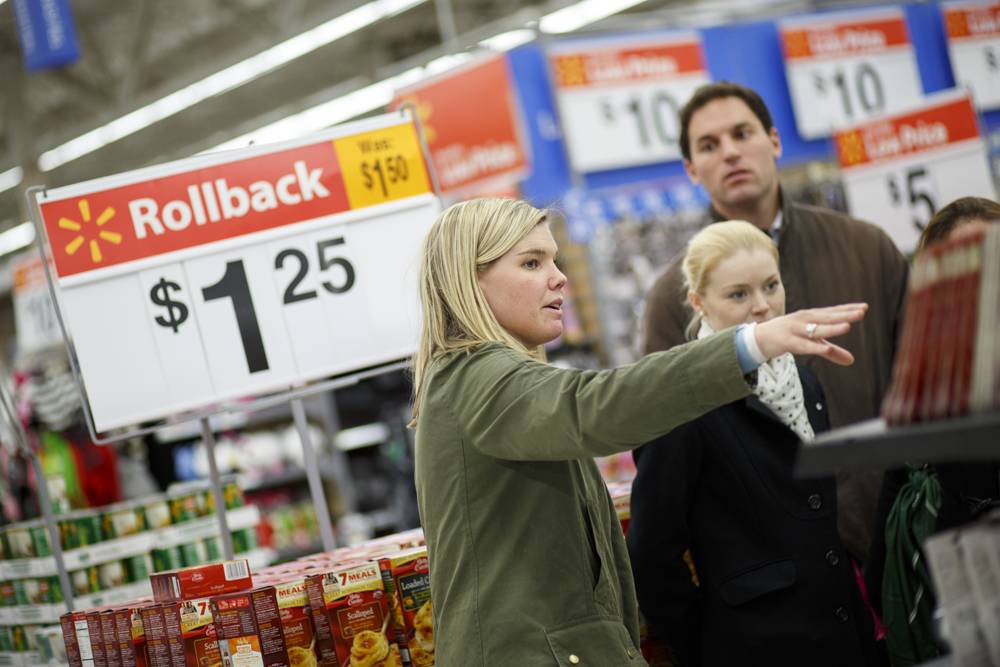Colgate-Palmolive Alumni Give Marketing and Interviewing Lessons
The second of three on-campus recruiting events by Colgate-Palmolive, this session focused on shopper marketing and mock interviews.

The second of three on-campus recruiting events by Colgate-Palmolive, this session focused on shopper marketing and mock interviews.
“Figuring out what you want to do is an important part of business school,” said Lindsay McPherson T’09. Like many Tuck students, McPherson came to Hanover without a clear vision of where she would be after two years. But after a few recruiting events and industry information sessions organized by the career development office, McPherson saw that marketing was the sector for her. She secured an internship at Colgate-Palmolive during her first year and is now a brand manager for Colgate-owned Tom’s of Maine.
McPherson and two other alumni who work for Colgate-Palmolive visited Tuck last week to guide students on the same path they traveled, from business school to a fulfilling career. For McPherson, these trips are a labor of love. “I like sharing the places and people I love with others,” she said. “It’s a way to give back, and it helps renew my enthusiasm.”
The latest visit—which consisted of a presentation on “shopper marketing” from Chris Ebe T’07, “store checks” with students at retail businesses in the Upper Valley, and mock interviews—was the second of three Colgate-Palmolive events held at Tuck every year. Alumni from the company also come to Tuck in the early fall to introduce students to Colgate, and then come back in January for the official interviews that determine which students will receive internship positions at the company.
Tuck is one of only five business schools where Colgate recruits on-campus for coveted jobs in brand management. Colgate also hosts Tuck students at its New York City headquarters every year for a “marketing trek,” where students get to spend a day in the life of a brand manager.
Ebe, the brand manager for multicultural marketing in the U.S., began the afternoon’s events with a talk entitled “Shoppersmart: Strategic marketing at retail touch points.” In-store marketing, Ebe explained, has become a crucial component of Colgate’s marketing strategy over the years, for numerous reasons. First, up to 80 percent of purchasing decisions for consumer package goods are made in the store, where consumers are most engaged with the products. Second, reaching consumers through television advertising is much more difficult and expensive today, as the number of channels has exploded and the audience has fragmented. Finally, he noted, in-store marketing is one of the beneficiaries of big data: as stores collect information about consumers’ purchasing habits, they can share that data with CPG companies to target products and offers to specific shopper segments. “The promise of shopper marketing is enormous to those who do it well,” Ebe said.
After the presentation, Ebe joined McPherson, TJ Freedman T’11, and a group of 30 students at various retail locations to see how shopper marketing and brand management affect the in-store environment. McPherson began at the Wal-Mart in West Lebanon, NH. The first stop was the oral care aisle, where Colgate’s red and white colors were displayed prominently on all manner of toothpaste, toothbrushes and mouthwash. Each shelf is a battleground for space and attention, with the victor determined by one simple metric: sales.
Colgate leverages its size and industry-leading brands to partner with Wal-Mart and other retailers on specific offerings. McPherson points out a combo-pack of a mouthwash and toothbrush, shrink-wrapped together. “A brand manager would work on this with Wal-Mart to meet a price point, and then work with the supply chain team to design the packaging,” she said. That sort of pairing is also an example of retailers and manufacturers driving purchases through “regimen” marketing, the strategy of putting together numerous products that people use in their daily hygiene habits. If successful, the retailer wins because the consumer purchases all of these items at the same time, and the manufacturer wins by building brand loyalty through ease and convenience.
The students moved on to the home care section. A rainbow of dish-liquids spanned the shelves, with the main competition being between premium brands Dawn and Palmolive. McPherson picked up a twin-pack of purple Dawn. “These drive value for the consumer,” she said. “Dawn is happy because this promotion is driving strong share at the largest retailer, but is challenged to sustain that performance because consumers are taken out of the purchase cycle for twice as long.” Further down the shelf were cylindrical bottles of Palmolive, designed after the premium dish liquids sold by Williams-Sonoma and Mrs. Meyers. “People love Palmolive,” she said, “so we asked ourselves, Why can’t we combine the efficacy of Palmolive with the prettier packaging and premium scents offered by the more boutique brands?” It might have raised a supply-chain problem with the bottle design, but McPherson explained that Colgate’s plant was able to make both shapes from the same mold, saving huge manufacturing costs and complexity.
While McPherson took her group of students to the Hannafords supermarket, her colleagues brought other students to BJs, CVS, and the Dollar Tree, to see shopper marketing at work in other classes of trade. When the store-checks were over, the groups reconvened at a restaurant in Hanover to talk about what they learned and continue networking. The following day, the Colgate delegation held mock interviews, familiarizing students with the specific terminology of the marketing industry and the typical questions asked in marketing interviews.
All told, the event brought together nearly three-dozen first-year students, three alumni at Colgate, and three second-years who interned at Colgate last summer, fostering the close interactions that are typical at Tuck.
“The more personalized attention we can give to the students, the better,” McPherson said.